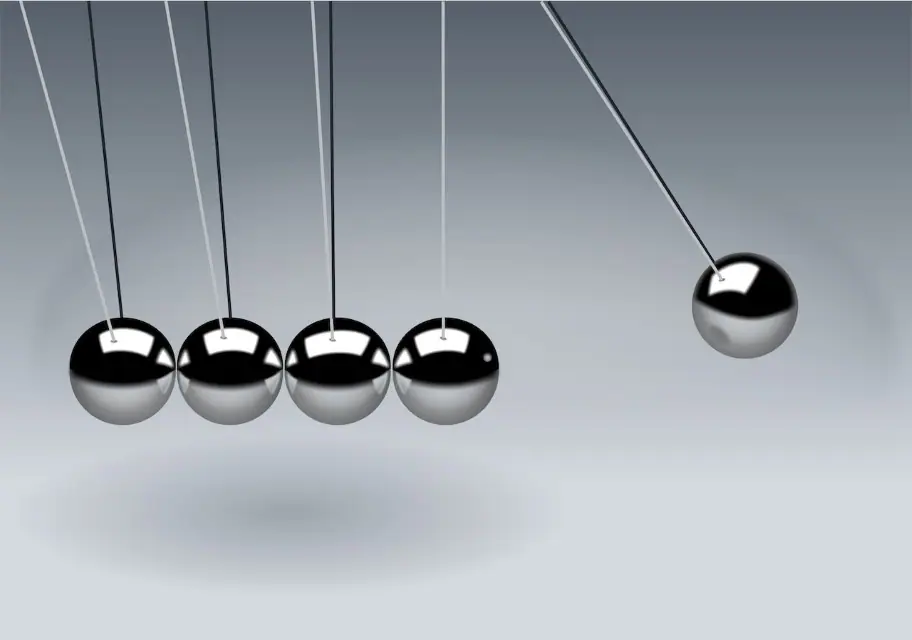Welcome to an exploration of the fascinating world of Newton’s Laws of Motion! Isaac Newton, a renowned physicist, laid the foundation for classical mechanics with his laws that provide a comprehensive understanding of motion. In this article, we will delve into the three laws of motion and their applications in various scenarios. So let’s dive in!
What is the Law of Motion?
The first law of motion
Also known as the law of inertia, Newton’s first law states that an object at rest will remain at rest, and an object in uniform motion will continue moving in a straight line, at a constant velocity, unless acted upon by an external force. This law emphasizes the influence of inertia on the state of motion of an object.
The second law of motion
The second law of motion, formulated by Sir Isaac Newton, establishes the relationship between force, mass, and acceleration. It states that the acceleration of an object is directly proportional to the net force acting on it and inversely proportional to its mass. This means that a larger force will cause a greater acceleration, while a heavier object requires a larger force to achieve the same acceleration.
The third law of motion
The third law of motion is often stated as “Every action has an equal and opposite reaction.” According to this law, when a force acts upon an object, the object exerts an equal and opposite force back on the source of the force. It highlights the concept of pairs of forces and the interconnected nature of interactions in the physical world.
What is Inertia?
Understanding the concept of inertia
Inertia is the property of an object that resists changes in its motion. According to Newton’s first law, an object will remain in its state of rest or uniform motion unless acted upon by an external force. In short, it is the tendency of an object to resist any change in its state of motion.
How does inertia affect the motion of objects?
Inertia plays a crucial role in determining how objects move. Objects with more mass have greater inertia, meaning they require a larger force to accelerate or decelerate. On the other hand, objects with less mass have less inertia and can be easily moved and controlled with smaller forces.
Examples of inertia in everyday life
Inertia can be observed in various aspects of our daily lives. For instance, when a car suddenly stops, the passengers tend to lunge forward due to their inertia, as their bodies tend to resist the change in motion. In sports, the importance of inertia can be observed when a ball keeps moving until it encounters an external force, such as friction or collision.
Exploring the Three Laws of Motion
Newton’s first law: The law of inertia
The first law of motion, often referred to as the law of inertia, states that an object at rest will stay at rest, and an object in motion will continue moving in a straight line at a constant velocity unless acted upon by an external force. This law serves as the foundation for understanding the behavior of objects in the absence of forces.
Newton’s second law: The relationship between force, mass, and acceleration
The second law of motion provides the quantitative relationship between force, mass, and acceleration. It states that the acceleration of an object is directly proportional to the net force acting on it and inversely proportional to its mass. In other words, applying a force to an object will cause it to accelerate in the direction of the force, with the magnitude of acceleration depending on the mass of the object.
Newton’s third law: Every action has an equal and opposite reaction
Newton’s third law highlights that for every action, there is an equal and opposite reaction. When two objects interact, the force exerted by the first object on the second is matched by a force of equal magnitude but in the opposite direction exerted by the second object on the first. This law explains the mutual nature of forces and their impact on the motion of objects in pairs.
Understanding Newton’s Laws in Practice
Applying Newton’s laws to objects in motion
Newton’s laws of motion find extensive application in the analysis of various scenarios involving objects in motion. These laws allow us to predict and understand the behavior of objects and the forces acting upon them. For example, they help us calculate the trajectory of projectiles, the motion of vehicles, and the behavior of objects in fluid environments.
Investigating the effects of forces on the motion of objects
By studying Newton’s laws, we can gain valuable insights into the effects of external forces on the motion of objects. Whether it’s the impact of friction on sliding objects or the force exerted by a rocket engine to propel a spacecraft, these laws provide a framework to evaluate and analyze the motion resulting from various forces.
Real-life examples of Newton’s laws in action
Newton’s laws are not limited to theoretical concepts; they are observed in practical situations as well. For instance, the motion of a roller coaster depends on the interplay of various forces, such as gravity, friction, and air resistance. Similarly, the flight of an airplane is governed by the principles of Newton’s laws, particularly the third law, as air exerts an equal and opposite reaction force to support the plane’s motion.
Newton’s Laws and Gravitation
The role of Newton’s laws in understanding gravitational forces
Newton’s laws play a crucial role in comprehending the gravitational forces acting on objects. The law of universal gravitation, formulated by Sir Isaac Newton, explains how every particle in the universe attracts every other particle with a force that is directly proportional to their masses and inversely proportional to the square of the distance between them. The application of Newton’s laws helps us understand the motion of celestial bodies and the dynamics of the universe.
Exploring the gravitational force between objects
Newton’s laws aid in investigating the gravitational force between objects. For example, the force that keeps the moon in orbit around the Earth can be understood by applying Newton’s laws, as the gravitational force between them provides the necessary centripetal force to maintain the motion of the moon.
How Newton’s laws explain the motion of planets
The motion of planets within our solar system can be explained using the principles of Newton’s laws. The gravitational attraction between the sun and each planet is responsible for their elliptical orbits and the maintenance of their motion. These laws provide a comprehensive framework for understanding the behavior of celestial objects and the dynamics of the universe.







